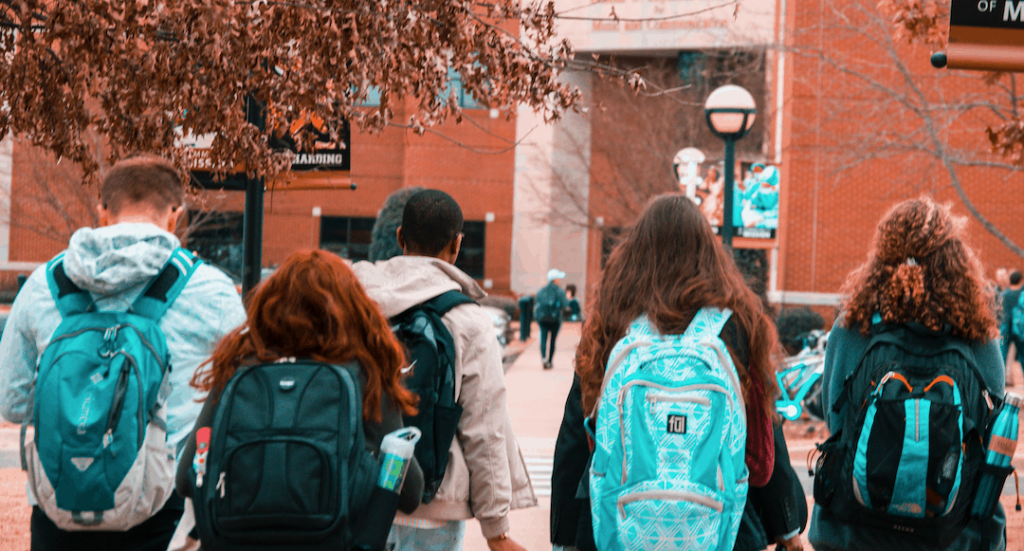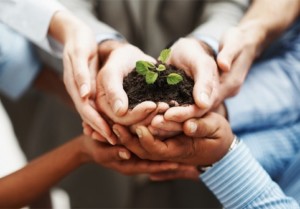Do You Know Who Your Students Know? Better Data on Students’ Networks Can Start the School Year off Right
Key Points
-
New data suggests that this year, the social landscape for some high school students looks different than years prior.
-
Before schools set to work on building new relationships, they should also pay attention to the relationships their students do and don’t already have.

By: Julia Freeland Fisher
Back to school means back to building relationships. Across high school campuses this fall, the first weeks of class will be marked by new rosters, ice breakers, hopes and dreams conferences, and the like as teachers set out to get to know their students and to help students get to know one another.
But before schools set to work on building new relationships, they should also pay attention to the relationships their students do and don’t already have. New data suggests that this year, the social landscape for some high school students looks different than years prior. In a recent Pew Research Center poll, one-third of adolescents reported that they feel less close to their classmates and teachers than they did before COVID. About a quarter felt less close to their friends or extended family as well. That should be alarming to school leaders, as young people tend to be more comfortable turning to people they already know for support. Smaller networks, in other words, likely spell less support.
The Pew data is not all doom and gloom. About half of teens reported a sense of social stability, feeling that their various connections across school, family, and friends were “about the same” as pre-pandemic. Moreover, close family ties appear stronger. A whopping 45% of teens in the sample reported that they’ve grown closer to their parents since the pandemic hit.
What should schools make of these trends? National averages, after all, tell you little about the specific young people in your classroom or school.
If anything, Pew’s data should remind school leaders to examine their own student population to better grasp the connections their students have and haven’t maintained both inside and outside of class. From there, administrators and educators can work to ensure that students who do feel connected stay connected, with the tools and mindsets to maintain strong relationships. And if Pew’s data is any clue, for those students experiencing disconnection, schools would be wise to start by recouping or strengthening connections that may have waned in recent years.
Before schools set to work on building new relationships, they should also pay attention to the relationships their students do and don’t already have.
Julia Freeland Fisher
A Promising Strategy: Relationship Mapping
One particular strategy can help schools and students reflect on these questions in a data-driven, asset-based, and equitable way: relationship mapping. The strategy allows schools to unearth relationship data that otherwise remains hidden behind grades, attendance, or anecdotes. Crucially, on the heels of the pandemic, schools can also design relationship-mapping activities in a way that not only identifies relationship assets, but that also urges students to mobilize and reactivate connections with people they may have fallen out of touch with.
Recently, we convened a roundtable discussion among practitioners who have been using relationship maps in their programs and schools. Here are three lessons learned we heard:
1. Map relationships across different domains of students’ lives
To accurately understand the various relationships at students’ disposal, schools should prompt students to reflect on connections they have across different domains of their lives, and different places where they spend time.
The domains should reflect the goals of your school or program. For Edward DeJesus, the founder of Social Capital Builders (SCB), his program’s social network mapping and analysis activity is geared towards helping students develop the skills and knowledge to map opportunity networks and identify patterns of relationships and flows with people, groups, and organizations that can influence future economic opportunities. According to SCB’s research, 73% of young people they surveyed reported that they had people in their lives who could be a source of support, but needed guidance on how to go about tapping into their networks.
For SCB, social network analysis is built into part of its Foundations in Social Capital Literacy (FISCL) curriculum, aimed at helping young people to reflect on both familial and developmental assets. “Young people have connections with familial (family members and close family friends) and developmental (former teachers, mentors, coaches, etc.) assets who all can serve as rich sources of labor market information and career development support,” DeJesus said. From there, young people are taught how to strategically engage these familial and developmental connections to access key industry or occupational stakeholders, which SCB refers to as Gateway connections. By understanding social network analysis, for example, a young person’s developmental connection, like a former coach who works as a warehouse manager, can easily connect the young person to the head of any department within his company.
While many of SCB’s programs focus on things like getting a job or violence prevention, schools can also design relationship mapping around their own particular philosophy, mission, or vision. At the Forest School, for example, a diverse-by-design microschool in Fayetteville, GA, building social capital is part of the school’s larger aim to ensure all graduates are “learning to live together,” both in their existing communities and across lines of difference. Students maintain a map–called a “Social Capital Tracker”–in a Google Doc where they log the relationships they maintain and build with: (1) people like them, (2) people different from them, and (3) people with influence. The school’s co-founder, Tyler Thigpen, describes this exercise as a way to collect data on students’ “bonding, bridging, and linking social capital” respectively.
2. Anchor relationship maps around students’ goals
Mapping connections across various domains can make the invisible visible. But identifying individuals students know is only the first step. When done right, mapping can also be a strategy to nudge students to engage with their networks in new ways. Put differently, building a network doesn’t just have to be about students meeting new people; it can be about students having new types of conversations with people they already know.
In that vein, the immense potential of relationship mapping is that it can be used to help students and institutions alike mobilize existing relationships and latent resources that reinforce their current goals and challenges. Programs aiming to increase persistence can coach students to keep those in their existing networks apprised of and accountable to their goals. Schools trying to expand access to mentors can start by coaching students to initiate mentoring relationships with people they already know. Institutions aiming to expand access to internships and jobs can encourage students to surface and share opportunities across their extended families and communities.
To increase the odds that students will feel motivated to engage with the relationships they identify in their map, relationship mapping should be tied to a goal or opportunity that students, not just schools, care about.
Many practitioners we interviewed agreed that the more clear and student-driven those goals are, the higher impact the activity can be to mobilizing students’ networks. Researcher Brian Lightfoot, who’s studied social capital across schools and nonprofits, has found that authentic social capital-building often comes from connecting “real stakes and purposeful action” to building networks. “There’s a definitive connection between youth voice and putting young people in leadership positions and developing their social capital,” said Lightfoot.
3. Repeat mapping to bolster reflection and track progress
Relationships are a renewable resource. As students goals, needs, and interests shift over time, different relationships with family, friends, teachers, and the like can offer different types of emotional and tangible support.
Ensuring that students embrace this ongoing value inherent in their networks often requirespairing maps with coaching and support on help-seeking behaviors, and revisiting these maps on a consistent basis to reflect on and update. For example, at the Forest School, students’ social capital trackers are displayed publicly in the school to normalize that all students are maintaining their social networks and to celebrate progress. Students update the social capital tracker twice a year with the help of a Guide (what Forest School calls educators). To keep the tracker manageable and up to date, whenever students update their trackers, they are asked to identify the top five strongest relationships in each of those categories.
Technology can also help keep relationship data fresh and actionable: promising tools like Social Capital Builders’ MyOh app, Visible Networks Lab’s PARTNERme app, and the Complex Data Collective’s Network Canvas tool are all examples of technologies that could help students and institutions alike continuously update and reflect on their networks.
If the pandemic wreaked havoc on what was already dubbed by some as a crisis of connections among young people, then relationship mapping–and tools and curriculum that support it–can help. Highlighting students’ existing networks and encouraging them to mobilize their relationships in new ways can put students in the driver’s seat of their networks. At the same time, identifying who students already know can also lend critical data to schools and programs grappling with how best to support their students in the year ahead.
Julia Freeland Fisher is the Director of Education at the Clayton Christensen Institute.
Want to learn more? Join me at a Getting Smart Town Hall at 10am PT on August 11 alongside Edward DeJesus and Tyler Thigpen. And stay tuned for our report, “Students’ hidden networks: Relationship mapping as a strategy to build asset-based pathways” out in early August.
This post is part of our New Pathways campaign sponsored by ASA, Stand Together and the Walton Family Foundation.








0 Comments
Leave a Comment
Your email address will not be published. All fields are required.